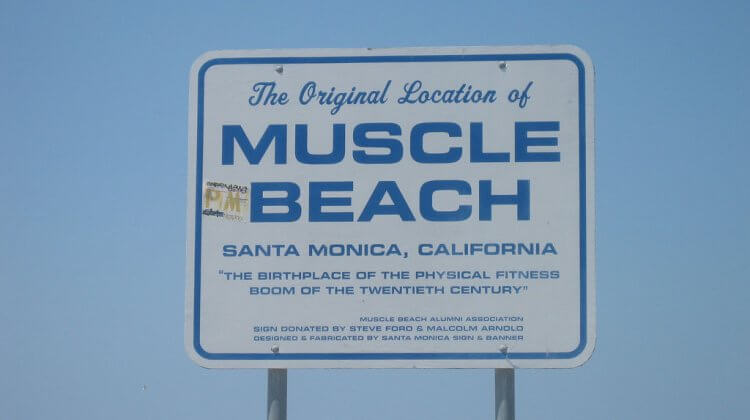
Gym culture and IPEDs:
Transforming from a subcultural enterprise that began in greasy, masculine, exclusive basement environments, gym and fitness culture has broadened and developed into a multibillion-dollar global industry. It now welcomes both men and women, young and old, and individuals with a range of goals. Today, any self-respecting fitness facility seems to offer professional guidance and technical knowledge, as well as the equipment needed for almost anyone to establish an active and healthy lifestyle. At the same time, this culture continues to be associated with extreme body ideals, an excessive preoccupation with diet and looks, and the use of image and performance enhancing drugs (IPEDs), including steroids, human growth hormones, insulin, and more. Paying attention to the historical development of gym and fitness culture and fitness doping inevitably means engaging in a discussion about the relationship between, the subcultural phenomenon of bodybuilding, doping, and extreme bodies on one hand, and the more general approach to the body found in contemporary gym and fitness culture, as well as in mainstream society, on the other.
To understand trends in contemporary IPED use, an understanding of the historical development and the root system of values in gym and fitness culture may come in handy. This is the first part of a two-part series in which we aim to describe the historical development of gym and fitness culture in general, and IPED use in this context in particular. Here we will focus on the pre-history of doping and then the shifts that took place mainly on the American west coast in the 1970s and 80s, including the introduction of women’s bodybuilding. In part 2, we will continue our discussion, focusing on the developments stemming from the 1990’s fitness revolution and onwards, including a more speculative discussion on what the future holds.
Physical culture
Although the symmetrical and muscular bodies shaped in today’s gym and fitness facilities can be traced back to ideals in ancient Greece (Verroken, 2006), a more contemporary historical start of gym and fitness culture is found in the early 1900s. Much of this was in relation to the development of physical culture. Influenced by the Danish, Swedish, and German gymnastics movements, scientists in the US turned their interest to physical education and methods for improving health and strength (Andreasson & Johansson, 2014).
One of the most notorious figures from the early 20th century physical culture movement was Eugene Sandow. He was born in Germany and made a living there as a strong man, showing off his body and muscles at circuses and vaudeville shows. For a few years he toured in the US and displayed his almost naked body in public (Budd, 1997). During his show, men and women were also allowed up on stage to touch his flexed muscles. Sandow was one of the first global gym entrepreneurs. He started an institute and travelled the world to teach his training methods and philosophy. Another prominent figure in the early history of gym and fitness was the American entrepreneur Robert Collins “Bob” Hoffman. He was the owner of York Barbell and the founder of magazines such as Muscular Development and Strength & Health. He also produced supplements for bodybuilders and was involved in coaching the US Olympic Weightlifting Team from 1936 to 1968.
During the early years, building muscles was largely considered a male affair. But this doesn’t mean that women were totally absent. A few women’s bodybuilding competitions took place as early as the 1940s. This was also when the famous Abbye “Pudgy” Stockton made a name for herself as a strongwoman, paving the way for contemporary women’s bodybuilding. Pudgy also worked closely with Bob Hoffman within American bodybuilding (Fair, 1999). At the same time, there is no doubt that women were a tiny minority in gym culture as it gradually shifted from being a mainly European phenomenon to being a part of American culture. Word of the practices of building muscles and lean bodies spread through early bodybuilding magazines and competitions.
Initially, the emphasis was put on perfecting and displaying the “natural body.” Notions of ease, grace, and naturalness were central. Gradually, these classical ideals eroded and were replaced by tanned mahogany bodies formed on Californian beaches. In the late 1950s and 1960s, IPEDs were introduced in bodybuilding. At this time, the medical profession was not particularly critical of the use of IPEDs for forming muscular bodies or even performing in sport. Quite the contrary, there was a growing fascination with such technological advances. This interest was not limited to the US. At the 1954 World Weightlifting Championships in Vienna, Austria, an American doctor, John B. Ziegler, famously observed young Russian athletes using testosterone (Kremenik et al., 2006). Pharmaceutical research into a similar drug with minimal side effects resulted in Dianabol. This accomplishment was considered a great success and Ziegler was key in introducing it to the weightlifters and bodybuilders he worked with in the US. By the 1960s bodybuilders were known to wear t-shirts emblazoned with “Dianabol, breakfast of champions.”
To this end, the early history of IPED use in bodybuilding and sport doping shared a common pre-history that stretched roughly from the turn of the 20th century up to the 1960s. This period was characterized by scientific optimism and curiosity, and by a naïve understanding of the role IPEDs could and would have in bodybuilding and in sport.
Pumping Iron and Muscle Beach
In the late 1930s and 40s, a stretch of beach in Santa Monica known as Muscle Beach became a defining location for bodybuilding culture and lifestyles (Locks & Richardson, 2012). Here, the beachfront soon became a public space where enthusiasts could gaze at the bodies of contemporary bodybuilding icons, including Steve Reeves. Reeves was known for his exceptional muscular definition and aesthetic appeal. Of course, the bodily ideals that made Reeves famous gradually underwent a change. A cultural transformation was initiated in the early 1960s, when Muscle Beach was moved down the coast to what was thought to be a better location in Venice Beach. This transformation in bodybuilding culture and body ideals were described by researchers Locks & Richardsson:
First, bodybuilders started to appear much more defined because of the introduction of diuretics that rid the body of excess water fluid, revealing far greater levels of muscularity and definition. Second, if one looks at bodybuilding magazines from this era, the physiques on display quite abruptly changed with an even greater impetus on mass than had been seen before. […] The reason for this change was partly due to more effective exercise and better diet, but significantly to the emergence of anabolic steroids. (Locks & Richardsson, 2012, p. 11)
Gym culture and bodybuilding blossomed in the 1970s. One driving force in this development was the 1977 documentary film Pumping Iron (Gaines & Butler, 1974), in which bodybuilding icons such as Arnold Schwarzenegger, Lou Ferrigno, Franco Columbo, and Frank Zane were followed as they prepared for the 1975 Mr. Olympia and Mr. Universe competitions. Schwarzenegger won the Mr. Olympia title that year and the film’s success aided his breakthrough into mainstream culture.
In the wake of Schwarzenegger’s success, it became more or less the norm to work out and build muscles to some extent, at least among men in the US. Around the same time, the health club industry also developed as part of a larger health movement. This was illustrated by the many companies at the time that were keen to offer facilities and opportunities for physical exercise to employees, often in effort to reduce the risk of heart attacks and other coronary diseases (McKenzie, 2013). Schwarzenegger’s body functioned as a nexus in this development. He embodied the American dream, an ethos saying that anything is possible if you work hard and put your mind to it. But while Schwarzenegger contributed greatly to making weightlifting a more common form of exercise for those who previously had not frequented a gym, he simultaneously contributed to making bodybuilding more extreme and subcultural in terms of bodily development, size, and vascularity.
Taking ideals of bodily perfection to a “freakish” shock-value extreme, bodybuilding culture was also entering an era of steroids. Even though experimental use of synthesized testosterone had already occurred at a number of gyms on the west coast of the US in the 1950s (Yesalis & Bahrke, 2007), it was during the 1970s that new types of drugs evolved into customized products with far fewer side effects. Use remained largely seen as unproblematic among bodybuilders and within broader gym and fitness culture.
The 1970s was a time of experimentation and legislation against IPEDs was still at a very rudimentary level. Using steroids outside the sphere of organized sport, for example, was not only legal but also somewhat accepted. This was particularly true in the bodybuilding context, including internationally. It’s important to understand this attitude towards IPEDs in relation the liberal approach to experimentation in drug taking in general during this era. Social drug use had become more widely accepted and experimentation was increasingly common among some groups. As noted by Schwarzenegger in Pumping Iron, there was also the “pharmacological revolution” during which pharmaceutical companies increasingly started to search for and develop more potent and less toxic drugs that were able to alter biochemical, physiological, and psychological functions in the body (Verroken, 2006). These factors came together at this point in time to produce fertile ground in which the roots of IPEDs took firm hold.
Women bodybuilders – New frontiers
Although men’s weightlifting and bodybuilding started and were organized much earlier, women’s bodybuilding was mainly set up in the late 1970s (Fair, 1999). Initially there were only a few women lifting weights, and those who did could enter competitions that were more like beauty contests than bodybuilding events (Klein, 1993). In this process, those controlling bodybuilding competitions – men – did not particularly encourage women to enter. Gradually, however, during the 1980s and 90s, highly muscular and defined female bodies gained recognition both within bodybuilding and, to some extent, in public discourse. Following this, competitors such as Debbi Muggli, Lenda Murray, and Iris Kyle proudly posed their massive and highly muscular bodies on stage. The film Pumping Iron II (1985) followed four women bodybuilders during their preparation for the Caesar’s Palace World Cup Championship. This gave women a platform and was part of this breakthrough for women in the sport.
Women successfully entered into a bodybuilding subculture that had previously been almost exclusively male. This arrival signaled the start of a transformation of the whole idea of physical culture. Interestingly, scholars also turned their interest towards female bodybuilders in the 1990s, as they were thought to represent something unique, something subversive, and avant-garde. The imagery of women’s bodybuilding remained somewhat ambiguous, however. Women’s bodybuilding has often been considered a threat to the “natural” gender order in public discourse, and discussions about female athletes have tended to focus on boundaries between male/female, natural/unnatural, and about potential gender transgressions with or without the use of IPEDs. Still, the rise of women’s bodybuilding as a phenomenon signaled the broader movement towards gym and fitness as a mass leisure activity.
Conclusion
The first phase of the history of contemporary fitness doping derives from a pre-history of bodybuilding and can be connected to physical culture and the strongmen popular in the early 20th century. This period was formative for the development of gym culture and bodybuilding in many ways, not least concerning the training techniques used to mold men’s bodies. Yet, this phase was only a starting point. The development within bodybuilding from the 1970s and onwards – the establishment of IFBB, the stardom of Arnold Schwarzenegger and others, the rise of women’s bodybuilding, and the mediatization of bodybuilding and fitness – can be interpreted as parts of a second phase in the development of gym and fitness culture. In contrast to the pre-historical developments, we can also identify a shift towards a more global culture, accentuated by mediatization of society. Whereas the discussion and debates about IPEDs in the 1960s and 70s, both within sports and in general, led to legislation and gradually more developed control systems, bodybuilding seemed to have created a secluded space for improvement alongside the use of IPEDs. But gradually the optimism and celebration of drugs during the second phase became a crisis. This led to a more critical approach to bodybuilding in general and to health risks associated with drug-using practices in particular. During the late 1980s and 90s, bodybuilding and the associated lifestyle was questioned in public discourse. This is where we will pick up in part 2.
NEXT >>: Fitness Culture and IPEDs: Crisis, revolution, and the digital push, 1990-2020
References
Andreasson, J., & Johansson, T. (2014). The Global Gym. Gender, Health and Pedagogies. Basingstoke: Palgrave Macmillan.
Budd, M.A. (1997). The Sculpture Machine. Physical Culture and Body Politics in the Age of Empire. London: MacMillan Press.
Fair, J.D. (1999). Muscletown USA. Bob Hoffman and the Manly Culture of York Barbell. Pennsylvania University Park: The Pennsylvania State University Press.
Gaines, C. & Butler, G. (1974). Pumping Iron. The Art and Sport of Bodybuilding. London: Sphere Books Ltd.
Klein, A. (1993). Little Big Men. Bodybuilding, Subculture and Gender Construction. New York: State University of New York Press.
Kremenik, M., Onodera, S., Nagao, M., Yuzuki, O. & Yonetani, S. (2006). A Historical Timeline of Doping in the Olympics (Part 1 1896-1968). Kawasaki Journal of Medical Welfare, 12(1), 19-28.
Locks, A. & Richardsson, N. (2012, eds.) Critical readings in bodybuilding. London: Routledge.
McKenzie, S. (2013). Getting Physical. The Rise of Fitness Culture in America. Lawrence Kansas: University Press of Kansas.
Verroken, M. (2006). Drug use and abuse in sport. In Mottram, D.R. (ed). Drugs in sport (4th ed.) (29-63). London/New York: Routledge.
About the author
Warning: Undefined array key "display_name" in /home/thinksteroids/public_html/wp-content/plugins/molongui-authorship-pro/includes/hooks/author/box/data.php on line 11
Warning: Undefined array key "display_name" in /home/thinksteroids/public_html/wp-content/plugins/molongui-authorship-pro/includes/hooks/author/box/data.php on line 11
Warning: Undefined variable $show_related in /home/thinksteroids/public_html/wp-content/plugins/molongui-authorship/views/author-box/parts/html-tabs.php on line 30


Leave a Reply
You must be logged in to post a comment.